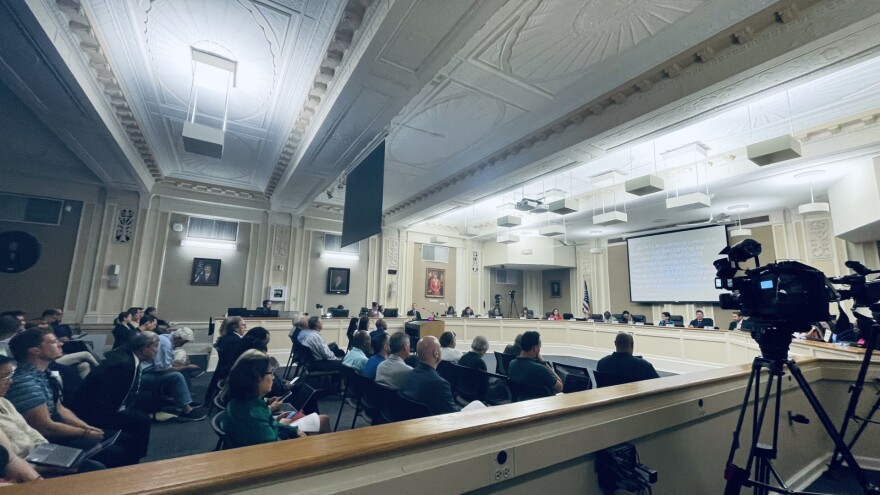In a 13-2 vote, the council pinned its hopes on the city’s planning commission, which is now tasked with crafting policy recommendations for how to achieve the council’s goals – chief among them, the creation of more affordable housing.
In an unusually lively debate over a decades-long tug-of-war, the council opted to allow for between 2,700 and 5,000 of newly-developable land. Councilman James Brown acknowledged the competing interests at stake, but argued the ultimate decision met the moment.
"People may not be happy with all the decisions and changes that we made. They may boil it down to winners and losers, but I believe that we made the best decision... to further make Lexington a place for everybody to call home and be successful," he said.
The argument that’s largely kept a boundary expansion at bay since the mid-90s is that developable land still exists within the current boundary and growth outside of that threatens the very thing that makes Lexington a desirable destination and home for many.
Fayette Alliance co-founder Don Robinson was the lone dissenting voice on the planning commission back in 1996 during the last expansion. He said his worries remain the same now, namely that Lexington will "lose that vitality, that mix of the rural resource, which is a huge economy... by just sprawling like any other community in America."
But the hope – both of supporters and skeptics alike – is that this time the plan will produce the intended result, easing housing costs and reducing zoning battles with neighborhoods that oppose new developments, while maintaining what makes Lexington unique.
In assessing the resulting plan, councilman David Sevigny leaned on the wisdom of the Rolling Stones.
"You can't always get what you want," he quoted.
Whether Lexington gets what it needs… is a question only time will tell.
Looking Forward
After spending months in the pressure cooker of public opinion, the council made a hard call Thursday, but in many ways, this week’s vote was just the beginning. It now falls on the planning commission to craft the nuts and bolts of the plan.
"It's going to be very, very important because they have got to define exactly what we set forward," says council member Kathy Plomin.
The task, which one commenter described as "Herculean," involves identifying the potential areas ideal for expansion, recommending types of development, and figuring out how to pay for it — all with a strong focus on incentivizing affordable housing.
"This will be a lot of work for the planning commission and we just lost a very key person, so I'm sure they're going to have to kind of add to the strength, and you never know, maybe bring in an outside source," the council member says. "But that's where it is right now and we wish them well but we're not hands off on it."
When it comes to delivering the plan, the commission has a deadline too – December 2024.
And the Budget?
Lexington leaders also put their stamp of approval on record-busting $507 million city budget Thursday night.
In a typical year – or during, say, the height of a global pandemic – the budget process might have prompted much more handwringing. But the question of what gets cut and by how much was replaced by a relatively smooth journey this time around.
"For the most part, this has been, dare I say, a pain-free budget process," Kit Anderson with CivicLex says. "Lexington's revenue has grown faster than they expected it to and so it's really been a year of abundance, and there haven't really been too many noes in the process."
In fact, there were a few additional yeses, with the council adding roughly $3 million for some minor projects like a new roof for the Pam Miller Downtown Arts Center and ADA accessibility at parks.
Bigger ticket items include $6 million to go toward a new or reconfigured government center, around $2 million a piece for upgrades to Phoenix and Douglass parks, along with funds for a second senior center. The spending plan also includes a 5% raise for non-sworn city employees.
It’s set to hit the books in July.



